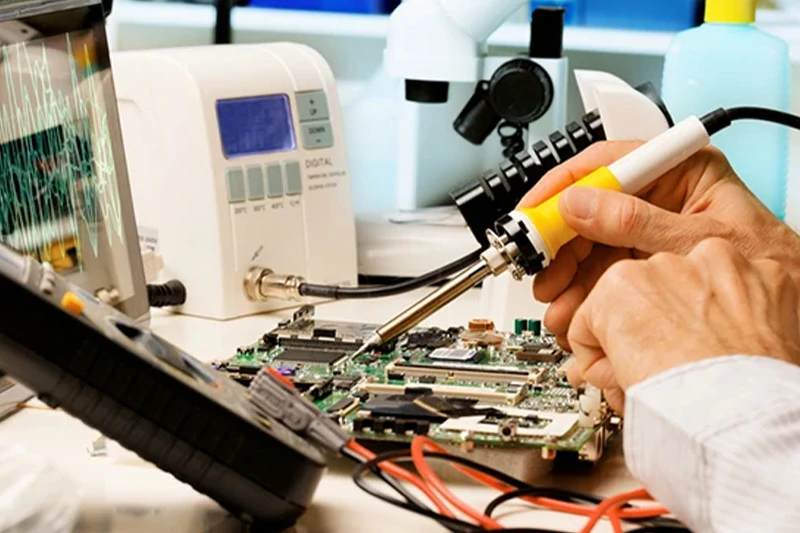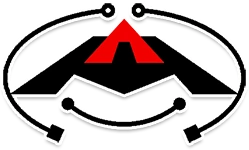Turnkey PCB Assembly: Streamlined Solutions for Your Electronics
● From Concept to Completion
● Cost-Effective Process
● Minimize Production Risks

Need Turnkey PCB Assembly?
Hunting for a one-stop turnkey PCB assembly service? Mars PCB is your ideal partner. With over 15 years of expertise, our end-to-end approach covers board design, parts sourcing, assembly, and thorough testing. You’ll save valuable time and lower expenses, while we keep quality and reliability at the forefront.
Serving clients across North America, Europe, Asia, and beyond, Mars PCB offers dependable results to meet diverse production requirements.
Turnkey PCB assembly integrates various steps into a cohesive operation. This approach helps you minimize costs while accelerating production times. Furthermore, it offers better project oversight, reducing complexities throughout.
What is Turnkey PCB Assembly?
A turnkey PCB assembly supplier handles every stage, from prototyping and fabrication to component procurement and testing. Typical turnkey services include:
- Initial Design & PCB Fabrication
- Material Sourcing
- Surface Mount & Through-Hole Assembly
- Protective Coatings
- Packaging
- Quality Assurance and Final Testing

How Much Does Turnkey PCB Assembly Cost?
The price of a turnkey project fluctuates based on factors like board dimensions, material quality, labor, and assembly intricacy. For smaller runs, costs might range between $10 and $50 for a prototype PCB. Per-square-inch assembly charges might go from $0.02 to $0.05 or more. It’s best to reach out for a precise quote using our no-cost form.
The Advantages of Turnkey PCB Assembly

One partner supervises the entire process, reducing the need for multiple vendors. This single-source setup simplifies each stage, saving you from juggling numerous contacts.
Turnkey providers usually enjoy bulk discounts and optimized supply chains. Passing these benefits along keeps costs manageable.
With fewer moving parts, your PCB assemblies move from design to completion more swiftly. This advantage gets your products to market with less delay.
When a single vendor oversees all production steps, maintaining uniform standards is easier. This approach includes thorough inspections and quality checks.
When is Turnkey PCB Assembly Recommended?
Projects involving high-density or multi-layer boards often require specialized expertise to handle complex builds efficiently.
A turnkey partner can handle high-volume assembly at scale, optimizing cost and performance.
If you lack the workforce or tools for PCB assembly, outsourcing to a specialist can fill those gaps effortlessly.
Outsourcing assembly frees up internal teams for innovation, design improvements, or other value-added tasks.

Partial Turnkey vs. Full Turnkey
There are two primary turnkey categories: partial and full. They each fit different needs.
Full Turnkey
The assembly house sources all materials (boards, components, stencils). You typically provide design data such as Gerber files and BOM.
Partial Turnkey
Here, you supply some of the necessary parts, and the assembly partner handles the rest.
Advantages | Ideal Situations | |
Partial Turnkey | – Reduced overall spending | – Customized or special-use parts |
Full Turnkey | – Single-source convenience | – Complex, high-volume demands |
How Does Turnkey PCB Assembly Work?
Having a clear picture of the steps involved can help you plan effectively.
Our engineers review DFM (Design for Manufacturing) details, BOM, Gerber, or ODB++ before production begins.
Automated machinery places surface-mount parts, while through-hole components are inserted and soldered.
Each component undergoes screening for compatibility and durability.
A final inspection detects any imperfections. Once cleared, your boards are safely packaged for shipment.
We secure parts from trusted suppliers, factor in lead times, and ensure everything meets your specs.
We employ AOI, X-ray, in-circuit, and other tests to confirm quality and functionality.
Relevant components can be pre-programmed for your product’s specific functions.
A protective layer shields the assembly from moisture, dust, or mechanical stress.
We stack layers, etch, drill, and prepare boards for either SMT or through-hole assembly.
Common Turnkey PCB Assembly Hurdles
Supply chain volatility can lead to shortages or shipment delays. Having backup suppliers and planning ahead mitigates these risks.
Adaptable manufacturers accept design tweaks, though introducing them early can save time and cost.
A thorough DFM check early on helps pinpoint design flaws and cut future expenses.
Reputable providers enforce strict quality checks to maintain consistent results, especially on major orders.
Open communication, plus clear risk mitigation, helps avoid setbacks and speeds up corrective actions.
A skilled turnkey provider uses industry connections to keep processes on track, even with intricate sourcing demands.
A direct point of contact allows quick updates, fosters transparency, and ensures you’re never left guessing about your project’s status.
Selecting the Right Turnkey PCB Assembly Partner
Look for industry standards such as ISO9001, ISO13485, IATF16949, AS9100, etc., confirming the provider’s rigorous quality practices.
Ask about completed projects, production capabilities, and experience with similarly complex products.
Confirm the provider has the tools and expertise to handle your board’s complexity and volume needs.
Select a partner who responds fast, clarifies timelines, and actively resolves potential issues.
Opt for a partner with robust supplier networks and stable procurement strategies.

Emerging Trends in PCB Assembly

Demand for ultra-compact boards keeps growing, driving HDI advancements and microvia usage.
With the rise of 5G and high-bandwidth technologies, boards must maintain top-tier signal quality.
Wearables, medical devices, and automotive applications continue to push adoption of bendable circuit boards.
Embedding parts in board layers is evolving, creating smaller footprints and enhanced efficiency.
3D printing is becoming more popular, offering speed and precision for specialized or low-volume applications.
Automation and AI routing tools are revolutionizing manufacturing flows, cutting errors and speeding up builds.
Turnkey PCB Assembly FAQs
Assembly can take 1–15 days, depending on order volume, component sourcing, and design complexity.
Expect to submit Gerber or ODB++ data, BOM, pick-and-place files, plus any specialized assembly instructions.
It’s possible, but revisions after assembly starts often bring higher costs. Early-stage changes are simpler and cheaper.
Your Trusted PCB Assembly Partner
Mars PCB is here to turn your concepts into finished products. Let’s bring your designs to life with expert SMT solutions.
